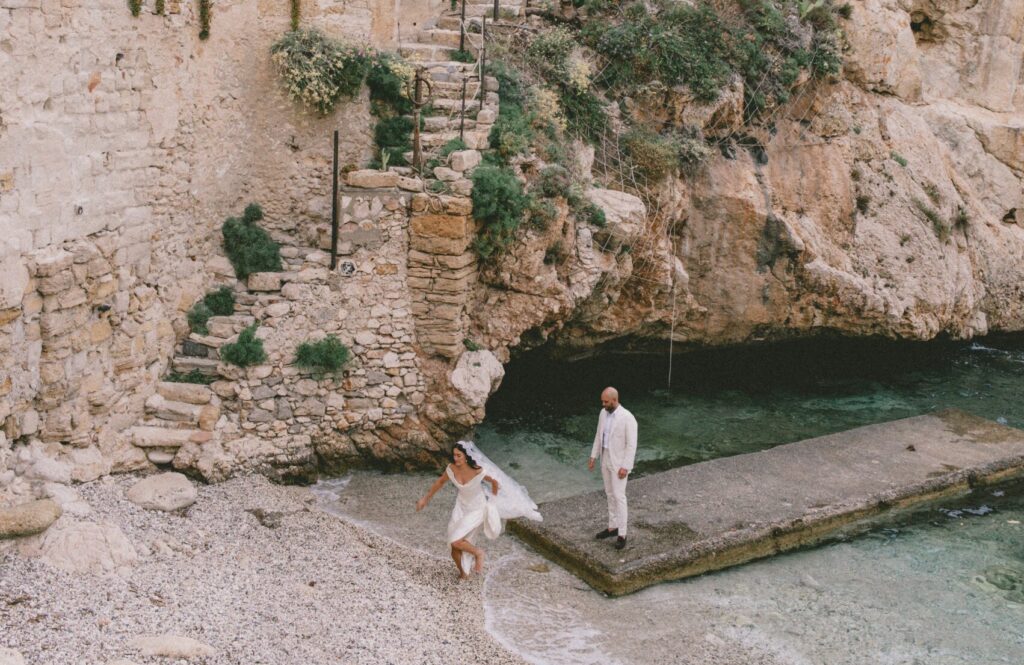Your wedding day is one of the most important days of your life, and capturing those special moments requires thoughtful preparation. Whether you’re working with your first wedding photographer or you’ve been dreaming about your wedding photos for years, knowing how to prepare for wedding photography can make the difference between good images and stunning ones that you’ll treasure forever.
This comprehensive guide will walk you through everything you need to know to ensure your big day is beautifully documented from start to finish.
Understanding the Photographer’s Perspective
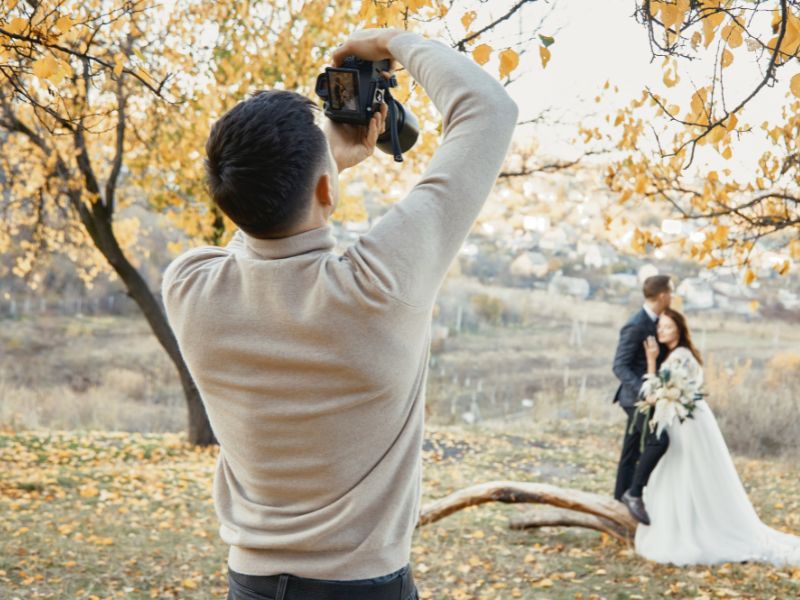
Before diving into the logistics, it’s helpful to understand what your wedding photographer needs to create beautiful photos. Professional photographers with experience shooting weddings know that preparation is just as important as technical skill. They rely on clear communication, proper planning, and cooperation from the wedding party to capture all the key shots throughout the whole day.
A seasoned photographer arrives with their camera bag packed with essential camera gear, including two camera bodies for redundancy, a backup camera, multiple focal lengths, spare batteries, and extra memory cards. They’ve likely photographed countless ceremonies and receptions, so they understand the flow of events. However, every wedding is unique, which is why your preparation matters so much.
Creating Your Shot List Ahead of Time
One of the best wedding photography tips is to develop a comprehensive shot list well before your wedding date. Sit down with your photographer weeks in advance to discuss which moments matter most to you. While experienced professionals know the essential shots—like the bride walking down the aisle, the first kiss, the groom’s reaction, and the first dance—your wedding will have unique elements worth capturing.
Your shot list should include:
- Specific family members and combinations for family photos
- Important detail shots like your engagement ring and wedding dress
- Key moments during the ceremony
- Candid shots of all the guests enjoying themselves
- Special dance floor moments beyond the first dance
- Any cultural or religious traditions unique to your celebration
Scouting Your Wedding Venue
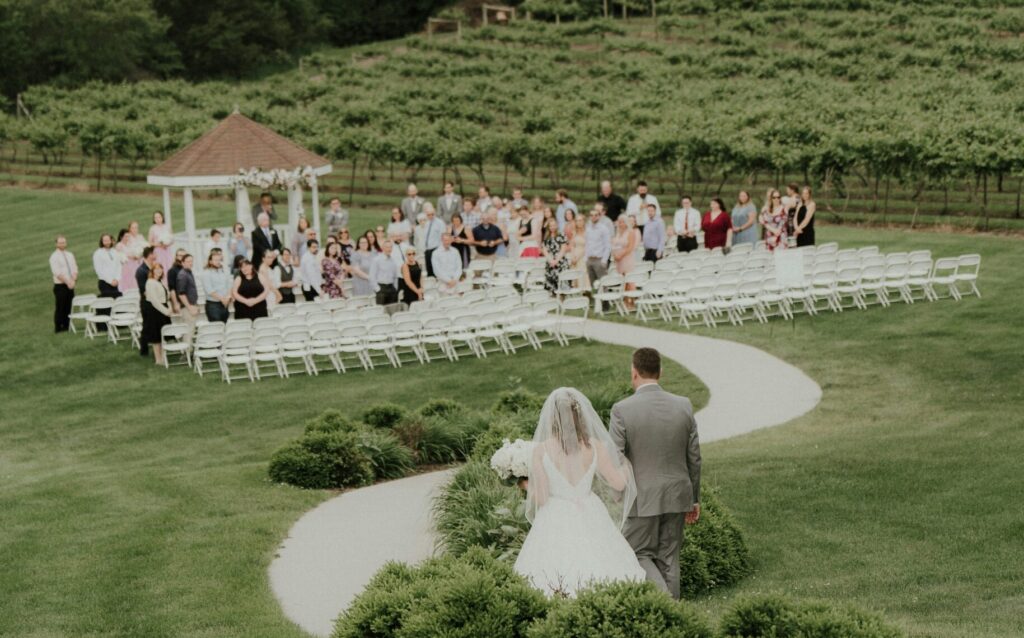
The wedding venue plays a crucial role in your photography. If possible, visit the location with your wedding photographer before the wedding day. This scouting session allows them to identify the best lighting conditions, plan for group photo locations, and determine where to position themselves during the ceremony.
Understanding the venue layout helps photographers anticipate where the bride and groom will be at different moments. They can identify spots with beautiful natural light for portraits and determine whether they’ll need to use a camera flash or other photography gear to supplement the lighting. Some venues have restrictions on where photographers can stand during the ceremony, so knowing these rules ahead of time prevents last-minute surprises.
Preparing the Bridal Party and Wedding Party
Your bridal party and wedding party are essential participants in your wedding photos, so preparing them is crucial. Share the timeline with everyone involved so they understand when they need to be camera-ready. The flower girl, groomsmen, bridesmaids, and all members of the wedding party should know when group photos will be taken.
Clear communication with your wedding party ensures everyone brings their game face when it’s time for photos. Let them know they might need to pack snacks for longer photo sessions, especially if you’re doing a first look or extensive portraits before the ceremony. Understanding how to pose for wedding photos can help your wedding party feel more comfortable in front of the camera.
Timeline Planning for Maximum Coverage
Creating a realistic timeline is an essential part of wedding photography preparation. Work with your photographer to build a schedule that allows adequate time for all the shots you want without feeling rushed. Factor in travel time between locations, natural light considerations, and buffer time for unexpected delays.
Most professional photographers recommend building in extra time for family shots and group photos, as gathering everyone can take longer than expected. If you want those dreamy golden hour portraits of the married couple, plan your ceremony time accordingly. Consider whether you’ll do a first look, which can relieve time pressure and allow for more relaxed photos throughout the day.
Organizing Family Photos Efficiently
Family photos are often the most challenging part of wedding photography logistics. With family members coming from different locations and potentially not knowing each other, organization is key. Create a specific list of family combinations you want photographed and designate a family member to help gather people.
Tips for smooth family photo sessions:
- Provide your photographer with the names of key family members
- Assign a family coordinator who knows everyone
- Schedule family photos immediately after the ceremony, while everyone is present
- Keep the list focused on essential combinations
- Inform family ahead of time so they don’t wander off
Communication with Your Wedding Photographer
Clear communication with your photographer transforms your client experience from good to exceptional. Share your vision, concerns, and expectations openly. If there are specific moments you absolutely don’t want to forget, tell your photographer. If certain family dynamics require sensitivity, mention that too.
Discuss your preferences for posed versus candid photography. Some couples want primarily documentary-style images capturing authentic moments, while others prefer more directed portraits. Most photographers offer a blend, but knowing your preference helps them adjust their approach. You might also want to explore tips on how to choose a luxury wedding photographer if you’re still in the selection process.
Preparing for Different Lighting Conditions
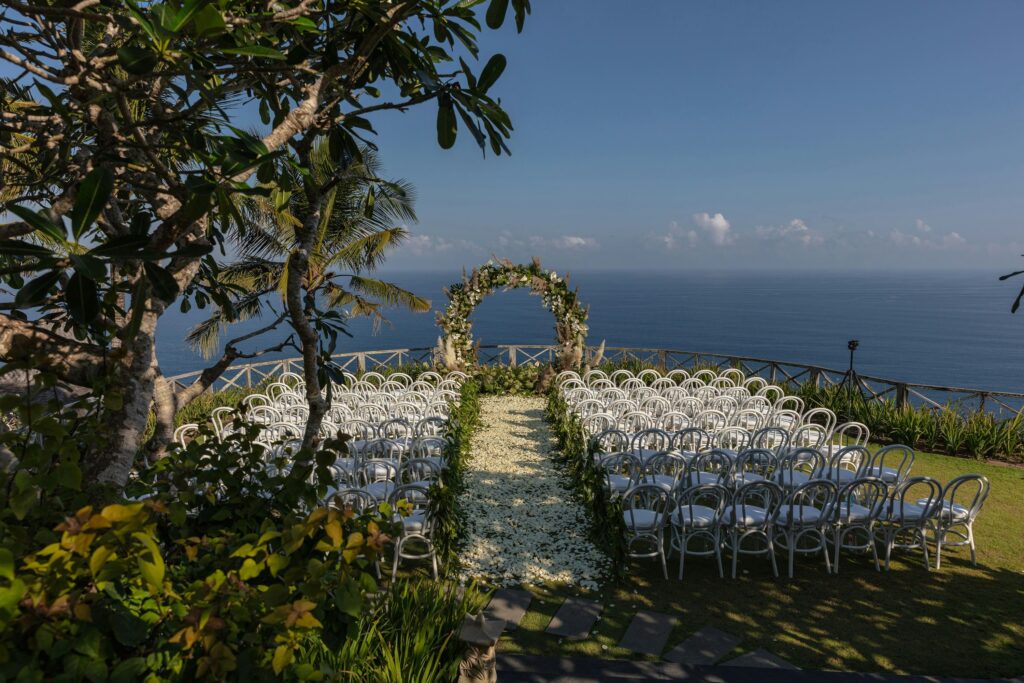
Lighting dramatically impacts your wedding photos, and preparation helps you work with it rather than against it. If you’re planning an outdoor ceremony, have a backup plan ready. Knowing what to do if it rains on wedding day ensures you’re prepared for weather challenges.
Indoor venues with limited natural light may require your photographer to use additional lighting equipment. Discuss whether they’ll be using a camera flash and how that will look in your space. Some photographers prefer to use continuous lighting or work exclusively with available light, which creates a different aesthetic. Understanding their approach helps set proper expectations.
Detail Shot Preparation
Those beautiful detail shots you see in wedding albums don’t happen by accident. Gather all the small items you want photographed and designate someone to give them to your photographer. This includes jewelry, invitation suites, shoes, perfume, the wedding dress on its hanger, bouquet, boutonniere, and any special family heirlooms.
Close-up shots of these details add depth to your wedding album and help tell the complete story of your day. Set aside these items in good lighting before you start getting ready. Your photographer will appreciate having everything collected in one place rather than searching for scattered items.
Capturing the Getting Ready Moments
The getting-ready portion of your wedding day offers wonderful opportunities for candid moments and beautiful photos. Prepare the space where you’ll be getting dressed by decluttering and ensuring good lighting. Natural light from large windows creates the best conditions for these intimate shots.
Coordinate timing so your photographer can capture both the bride and groom getting ready if you’ve hired them for full-day coverage or a second shooter. These moments—from putting on the wedding dress to adjusting the tie—become treasured memories. Having your bridal party present during this time creates opportunities for natural, joyful images.
Working with a Second Shooter
Many wedding photography businesses offer packages with a second shooter, which provides comprehensive coverage of your whole day. While the primary photographer focuses on the bride, a second shooter can capture the groom’s reaction as his bride walks down the aisle, or photograph guests arriving while the main photographer is with the wedding party.
Two photographers mean more angles, more moments captured, and less chance of missing important shots. They can simultaneously cover different family members’ reactions during the ceremony or capture both ends of the dance floor during reception festivities. This investment often results in a richer, more complete collection of images.
Technical Considerations for Couples
While you don’t need to understand all the technical aspects of photography, knowing a few basics helps. Your photographer will use different focal lengths for various shots—a wide-angle lens for venue and group photos, and longer lenses for close-up shots and candid moments. They’ll switch between camera bodies to avoid changing lenses and missing moments.
Understanding that photographers need spare batteries, memory cards, and backup equipment helps you appreciate their preparation. Professional photographers working in the wedding photography business know that redundancy is essential. They pack their camera bag with backups for everything, ensuring technical failures don’t compromise your photos.
Maximizing Natural Moments Throughout the Day
While posed photos have their place, some of the most beautiful photos come from genuine moments. Create space in your timeline for natural interactions with friends, family, and your new spouse. When you’re truly present and engaged with your guests, authentic emotion shines through in the images.
Trust your photographer to capture these candid moments while you focus on experiencing your wedding. Photographers with significant experience shooting weddings know how to anticipate special moments—like the flower girl’s reaction to the ceremony or all the guests celebrating on the dance floor. Your job is to be present; let your photographer worry about the photographs.
Preparing Yourself Physically and Mentally
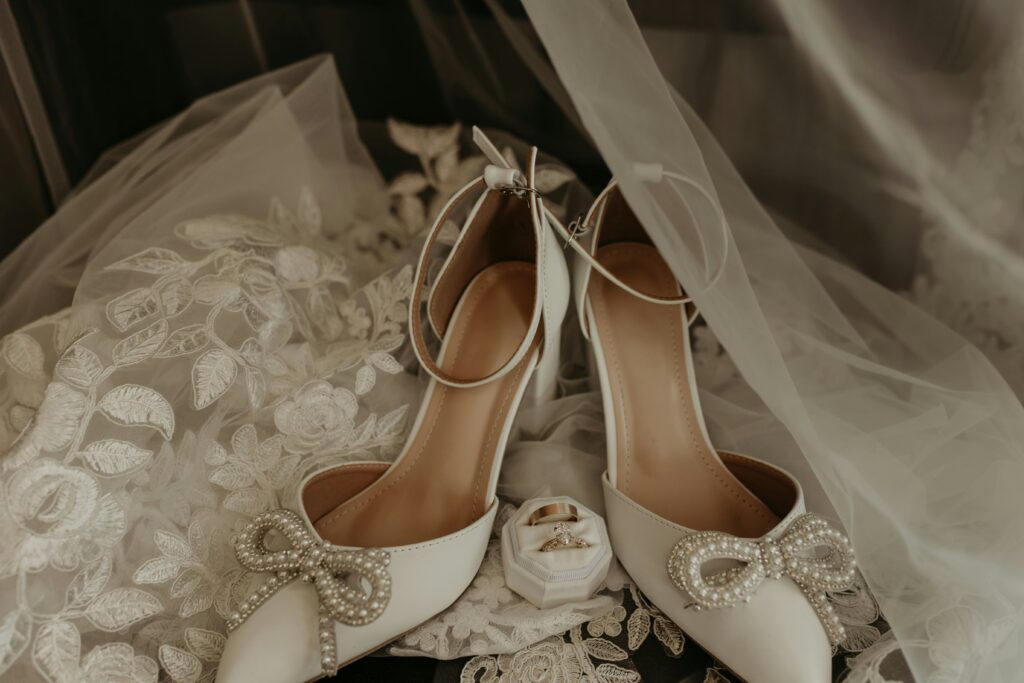
Learning how to look good in wedding photos goes beyond what you wear—it’s about feeling comfortable and confident. Practice your posture, work on genuine smiles, and remember to breathe. When you’re relaxed, you photograph better.
Consider your wedding day self-care routine. Pack snacks to maintain energy, stay hydrated, and schedule breaks if you’re doing extensive photography sessions. A tired, hungry couple won’t produce the radiant photos you’re hoping for. Taking care of yourself is an essential part of photography preparation.
Managing Guest Expectations During Photo Time
Your guests play an important role in your wedding photos, from ceremony reactions to dance floor energy. Set expectations by including a note in your wedding program or having your officiant make an announcement about unplugged ceremonies. While you want guests to enjoy the moment, you don’t want everyone’s phones blocking your photographer’s view during the first kiss.
During formal family shots and group photos, having a coordinator or wedding party member help gather people keeps things moving efficiently. Your guests will appreciate the organization, and you’ll get through photos quickly, leaving more time for celebration.
Final Preparations Before the Big Day
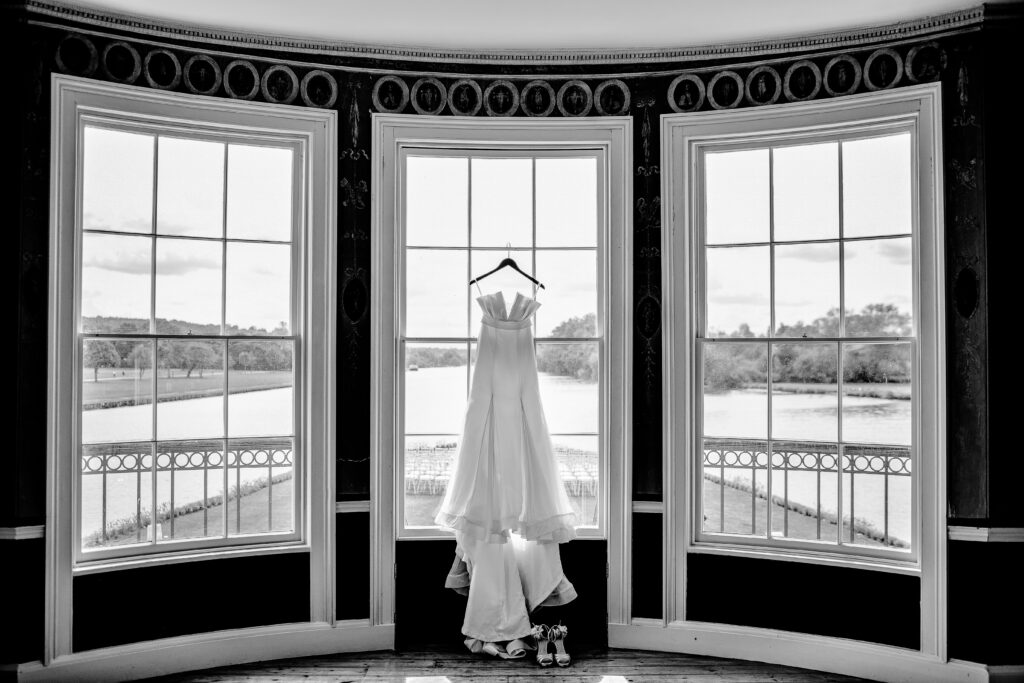
In the week leading up to your wedding, confirm all details with your photographer. Verify arrival times, backup contacts, and share any last-minute changes to the timeline or venue. Provide them with the final shot list and family photo combinations. This final check ensures everyone is aligned and ready.
Pack any items your photographer might need access to, like the business name of your venue written down with parking information, contact numbers for key vendors, and a copy of your timeline. These small details prevent confusion on the wedding day and allow your photographer to focus entirely on creating beautiful images for you.
Conclusion
Preparing for wedding photography transforms your big day experience from chaotic to confident. By planning ahead, communicating clearly, and trusting your photographer’s expertise, you set the stage for stunning images that capture every meaningful moment. Remember that your photographer is there to document your love story, preserve your special moments, and create the wedding album you’ll treasure for generations.
The preparation work you do now—from creating your shot list to scouting your venue—ensures that years from now, you’ll look back on your wedding photos and remember not just how things looked, but how everything felt. These images become the tangible memories of one of life’s most significant celebrations.
Ready to ensure your wedding day is captured beautifully?
Celeste Wedding Photography specializes in creating timeless, elegant images that tell your unique love story. With experience shooting weddings across diverse venues and styles, we bring both artistic vision and professional preparation to every celebration. Let’s discuss how we can make your wedding photography dreams a reality.
Frequently Asked Questions
How far in advance should I book my wedding photographer?
Book your wedding photographer 9-12 months before your wedding date. Popular photographers book a year or more in advance. Early booking secures your preferred photographer and allows time for engagement photos. Shorter engagement? Contact photographers immediately for availability.
What should I bring to my wedding photography planning meeting?
Bring inspiration photos, your wedding day timeline, venue information, and must-have shot list. Include engagement photos if available. According to The Knot’s wedding photography guide, bring family considerations, cultural traditions, and questions about their process, gear, and backup plans.
How long should we allocate for couple portraits on our wedding day?
Plan 30-45 minutes minimum, 60-90 minutes ideal. Timing depends on your venue, first look plans, and locations. Work with your photographer to schedule golden hour portraits. Buffer time prevents feeling rushed.
Should we feed our wedding photographer during the reception?
Yes. Professional photography is demanding work—photographers work 8-12 hours. Most photography contracts include vendor meals. Provide a hot meal and water access. According to The Knot’s guide on feeding wedding vendors, well-fed photographers capture your special moments better.
What happens if our wedding photographer gets sick on our wedding day?
Professional photographers maintain backup plans. Reputable wedding photography businesses have qualified photographers for emergencies. Ask about contingency plans when booking. Most contracts address illness and equipment failure. A second shooter provides additional security.
